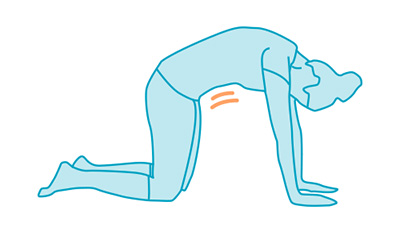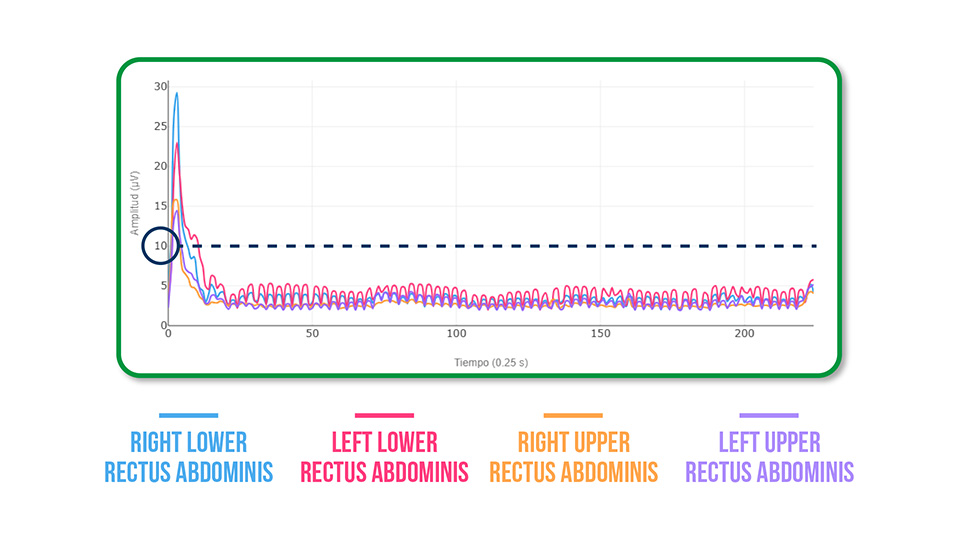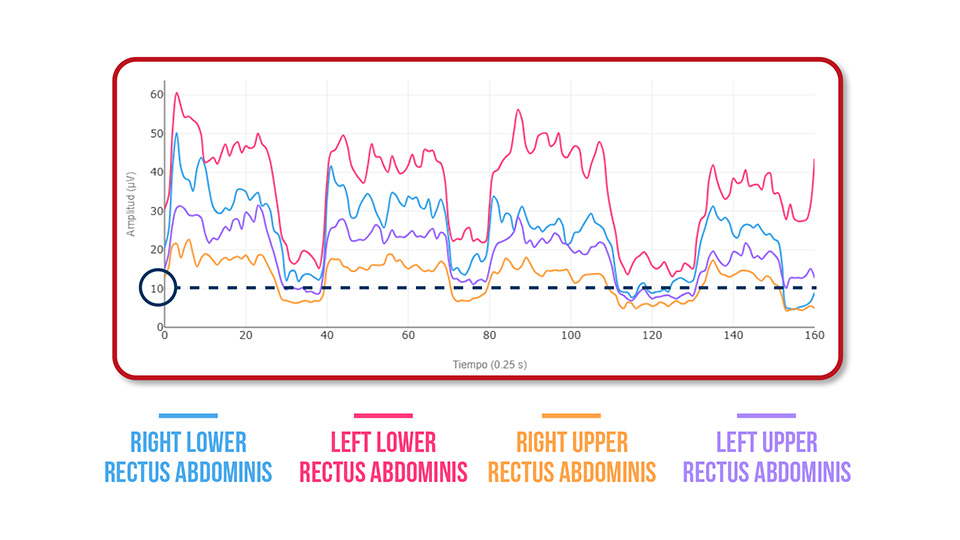Correct activation of the transverse abdominis is key in many physiotherapy treatments—especially for low back pain, lumbopelvic instability, and postpartum recovery.
However, identifying this activation is not always easy. In fact, it’s one of the most common errors in clinical practice.

At first glance, a patient may seem to be “activating their core correctly,” but in reality, the rectus abdominis and other superficial muscles are doing all the work.
This compensation not only distorts the assessment, but also perpetuates functional issues: pain doesn’t improve, instability persists, and the patient stalls in their progress.
With surface electromyography (EMG), you can evaluate—in real time and with precision—whether your patient is compensating with superficial muscles or correctly activating their deep core.
Want to improve your core assessments and treatments?
👉 Contact us and discover how to use EMG to evaluate the transverse abdominis reliably and effectively.
In this post, you’ll learn how to apply a simple, valid, and objective test to assess this activation: the hollowing exercise.
Why Is Transverse Abdominis Activation So Important?
The transverse abdominis is the deepest abdominal muscle and plays a vital role in trunk stabilization. When it functions properly, it:
- Increases lumbar spine and pelvic stability
- Reduces overload on superficial lumbar muscles
- Contributes to proper intra-abdominal pressure regulation
- Improves breathing and postural mechanics
- Is essential in treating chronic low back pain, pelvic dysfunctions, and postpartum recovery
When not properly activated, the rectus abdominis often takes over, leading to superficial, inefficient activation that prevents the benefits of deep core engagement.
The Test: Is Your Patient Truly Activating the Transverse Abdominis?
An effective way to assess this is with the hollowing exercise, which involves drawing the belly button inward without engaging superficial muscles.

The key is to use EMG to monitor the rectus abdominis and confirm that it remains almost inactive during the exercise.
What should you look for?
Hollowing should cause minimal activation of the rectus abdominis, allowing the transverse abdominis to lead the movement. This means:
→ Relaxed rectus abdominis = <10–20 μV
Two Real Patterns to Help Interpret the Test
✅ Correct Transverse Abdominis Activation

When the patient performs the hollowing correctly, the rectus abdominis (both upper and lower) remains almost inactive (under 10 μV), indicating good deep core recruitment.
❌ Compensated Activation

If the rectus abdominis activates above 10 μV, reaching average values of 50 μV, it signals that the patient is relying on superficial muscles due to poor deep core control.This suggests that the transverse abdominis is not being properly recruited.
Conclusion
Assessing transverse abdominis activation isn’t just a technical matter—it’s a clinical decision that can significantly impact your patient’s progress.
It’s not enough to assume they’re “doing the exercise right”; you need objective evidence to confirm they’re activating the deep stabilizing muscle responsible for motor control, stability, and relapse prevention.
Surface EMG gives you that clarity. It helps you detect compensations, adjust in real time, and teach the patient to connect with their deep core more effectively.
Don’t let false control or compensation patterns slow their progress.
👉 Start to use EMG to assess, intervene, and retrain with total precision.
Want to learn how? Contact us here and discover how you can integrate it into your clinic.

